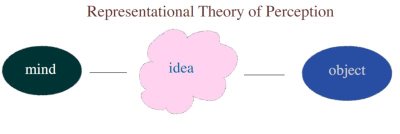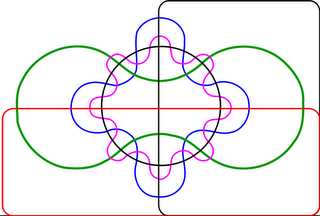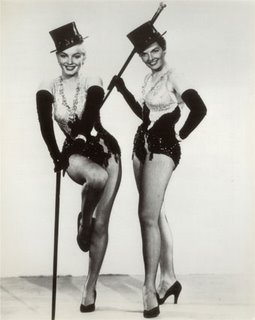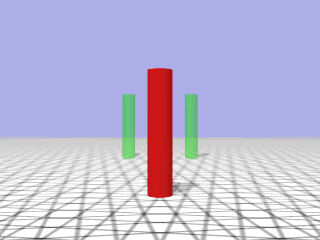 Frugality (also known as thrift or thriftiness), often confused with cheapness or miserliness, is a traditional value, life style, or belief system, in which individuals practice both restraint in the acquiring of and resourceful use of economic goods and services in order to achieve lasting and more fulfilling goals. In a money-based economy, frugality emphasizes economical use of money in meeting long term personal, familial, and communal desires.
Frugality (also known as thrift or thriftiness), often confused with cheapness or miserliness, is a traditional value, life style, or belief system, in which individuals practice both restraint in the acquiring of and resourceful use of economic goods and services in order to achieve lasting and more fulfilling goals. In a money-based economy, frugality emphasizes economical use of money in meeting long term personal, familial, and communal desires.
20061231
Frugality
 Frugality (also known as thrift or thriftiness), often confused with cheapness or miserliness, is a traditional value, life style, or belief system, in which individuals practice both restraint in the acquiring of and resourceful use of economic goods and services in order to achieve lasting and more fulfilling goals. In a money-based economy, frugality emphasizes economical use of money in meeting long term personal, familial, and communal desires.
Frugality (also known as thrift or thriftiness), often confused with cheapness or miserliness, is a traditional value, life style, or belief system, in which individuals practice both restraint in the acquiring of and resourceful use of economic goods and services in order to achieve lasting and more fulfilling goals. In a money-based economy, frugality emphasizes economical use of money in meeting long term personal, familial, and communal desires.
Amodal
 Amodal perception is the term used to describe the full perception of a physical structure when it is only partially perceived, for example a table will be perceived as a complete volumetric structure even if only part of it is visible, the internal volumes and hidden rear surfaces are perceived despite the fact that only the near surfaces are exposed to view, and the world around us is perceived as a surrounding void, even though only part of it is in view at any time.
Amodal perception is the term used to describe the full perception of a physical structure when it is only partially perceived, for example a table will be perceived as a complete volumetric structure even if only part of it is visible, the internal volumes and hidden rear surfaces are perceived despite the fact that only the near surfaces are exposed to view, and the world around us is perceived as a surrounding void, even though only part of it is in view at any time.
Usability
 Usability is a term used to denote the ease with which people can employ a particular tool or other human-made object in order to achieve a particular goal. Usability can also refer to the methods of measuring usability and the study of the principles behind an object's perceived efficiency or elegance.
Usability is a term used to denote the ease with which people can employ a particular tool or other human-made object in order to achieve a particular goal. Usability can also refer to the methods of measuring usability and the study of the principles behind an object's perceived efficiency or elegance. In human-computer interaction and computer science, usability usually refers to the elegance and clarity with which the interaction with a computer program or a web site is designed. The term is also used often in the context of products like consumer electronics, or in the areas of communication, and knowledge transfer objects (such as a cookbook, a document or online help). It can also refer to the efficient design of mechanical objects such as a door handle or a hammer.
MacGuffin
 The director and producer Alfred Hitchcock popularized both the term "MacGuffin" and the technique. According to the Oxford English Dictionary, Hitchcock explained the term in a 1939 lecture at Columbia University: "[W]e have a name in the studio, and we call it the 'MacGuffin.' It is the mechanical element that usually crops up in any story. In crook stories it is always the necklace and in spy stories it is always the papers."
The director and producer Alfred Hitchcock popularized both the term "MacGuffin" and the technique. According to the Oxford English Dictionary, Hitchcock explained the term in a 1939 lecture at Columbia University: "[W]e have a name in the studio, and we call it the 'MacGuffin.' It is the mechanical element that usually crops up in any story. In crook stories it is always the necklace and in spy stories it is always the papers."
Hitchcock
 Sir Alfred Joseph Hitchcock, KBE (August 13, 1899 – April 29, 1980) was a highly influential film director and producer who pioneered many techniques in the suspense and thriller genres. He directed more than fifty feature films in a career spanning six decades, from the silent film era, through the invention of talkies, to the colour era. Hitchcock was among the most consistently successful and publicly recognizable directors in the world during his lifetime, and remains one of the best known and most popular directors of all time, famous for his expert and largely unrivalled control of pace and suspense throughout his movies.
Sir Alfred Joseph Hitchcock, KBE (August 13, 1899 – April 29, 1980) was a highly influential film director and producer who pioneered many techniques in the suspense and thriller genres. He directed more than fifty feature films in a career spanning six decades, from the silent film era, through the invention of talkies, to the colour era. Hitchcock was among the most consistently successful and publicly recognizable directors in the world during his lifetime, and remains one of the best known and most popular directors of all time, famous for his expert and largely unrivalled control of pace and suspense throughout his movies.
Sublime
 In aesthetics, the sublime (from the Latin sublimis (under the lintel, high, exalted)) is the quality of transcendent greatness, whether physical, moral, intellectual, metaphysical or artistic. The term especially refers to a greatness with which nothing else can be compared and which is beyond all possibility of calculation, measurement or imitation. This greatness is often used when referring to nature and its vastness.
In aesthetics, the sublime (from the Latin sublimis (under the lintel, high, exalted)) is the quality of transcendent greatness, whether physical, moral, intellectual, metaphysical or artistic. The term especially refers to a greatness with which nothing else can be compared and which is beyond all possibility of calculation, measurement or imitation. This greatness is often used when referring to nature and its vastness.
Libido
 Libido in its common usage means sexual desire; however, more technical definitions, such as those found in the work of Carl Jung, are more general, referring to libido as the free creative--or psychic--energy an individual has to put toward personal development, or individuation.
Libido in its common usage means sexual desire; however, more technical definitions, such as those found in the work of Carl Jung, are more general, referring to libido as the free creative--or psychic--energy an individual has to put toward personal development, or individuation.
Psychodynamics
 1. Principle of Equivalence – if the amount of energy consigned to a given psychic element decreases or disappears, that amount of energy will appear in another psychic element.
1. Principle of Equivalence – if the amount of energy consigned to a given psychic element decreases or disappears, that amount of energy will appear in another psychic element.2. Principle of Entropy – the distribution of energy in the psyche seeks equilibrium or balance among all the structures of the psyche.
Representationism
 This immediately raises a question: How well do sense-data represent external objects, properties, and events? Indirect realism creates deep epistemological problems, such as solipsism and the problem of the external world. Nonetheless, Indirect realism has been popular in the history of philosophy and has been developed by many philosophers including Bertrand Russell, Spinoza, René Descartes, and John Locke.
This immediately raises a question: How well do sense-data represent external objects, properties, and events? Indirect realism creates deep epistemological problems, such as solipsism and the problem of the external world. Nonetheless, Indirect realism has been popular in the history of philosophy and has been developed by many philosophers including Bertrand Russell, Spinoza, René Descartes, and John Locke.
LifeLog
 LifeLog is a project of the Information Processing Technology Office of the Defense Advanced Research Projects Agency. According to its bid solicitation pamphlet, is to be "an ontology-based (sub)system that captures, stores, and makes accessible the flow of one person's experience in and interactions with the world in order to support a broad spectrum of associates/assistants and other system capabilities. The objective of this 'LifeLog' concept is to be able to trace the 'threads' of an individual's life in terms of events, states, and relationships."
LifeLog is a project of the Information Processing Technology Office of the Defense Advanced Research Projects Agency. According to its bid solicitation pamphlet, is to be "an ontology-based (sub)system that captures, stores, and makes accessible the flow of one person's experience in and interactions with the world in order to support a broad spectrum of associates/assistants and other system capabilities. The objective of this 'LifeLog' concept is to be able to trace the 'threads' of an individual's life in terms of events, states, and relationships."
Globalism vs. Tribalism
 Tribalism is a social system where human society is divided into small, roughly independent subgroups, called tribes. Tribal societies lacked any organizational level beyond that of the local tribe, with each tribe consisting only of a very small, local population. The internal social structure of a tribe can vary greatly from case to case, but, due to the small size of tribes, it is always a relatively simple structure, with few (if any) significant social distinctions between individuals. Some tribes are particularly egalitarian, and most tribes have only a vague notion of private property; many have none at all. A shared sense of identity and kinship encourages the development of kin selection. Tribalism has also been sometimes been called "primitive communism" but this is rather misleading since allegiance to a communist state is not based on kin-selective altruism. One thing that is certain is that tribalism is the very first social system that human beings ever lived in, and it has lasted much longer than any other kind of society to date.
Tribalism is a social system where human society is divided into small, roughly independent subgroups, called tribes. Tribal societies lacked any organizational level beyond that of the local tribe, with each tribe consisting only of a very small, local population. The internal social structure of a tribe can vary greatly from case to case, but, due to the small size of tribes, it is always a relatively simple structure, with few (if any) significant social distinctions between individuals. Some tribes are particularly egalitarian, and most tribes have only a vague notion of private property; many have none at all. A shared sense of identity and kinship encourages the development of kin selection. Tribalism has also been sometimes been called "primitive communism" but this is rather misleading since allegiance to a communist state is not based on kin-selective altruism. One thing that is certain is that tribalism is the very first social system that human beings ever lived in, and it has lasted much longer than any other kind of society to date.
Ambiguity
 Ambiguity is the property of words, terms, and concepts (within a particular context) as being undefined, undefinable, or without an obvious definition and thus having an unclear meaning. A word, phrase, sentence, or other communication is called “ambiguous” if it can be interpreted in more than one way. Ambiguity is distinct from vagueness, which arises when the boundaries of meaning are indistinct. Ambiguity is in contrast with definition, and typically refers to an unclear choice between standard definitions, as given by a dictionary, or else understood as common knowledge.
Ambiguity is the property of words, terms, and concepts (within a particular context) as being undefined, undefinable, or without an obvious definition and thus having an unclear meaning. A word, phrase, sentence, or other communication is called “ambiguous” if it can be interpreted in more than one way. Ambiguity is distinct from vagueness, which arises when the boundaries of meaning are indistinct. Ambiguity is in contrast with definition, and typically refers to an unclear choice between standard definitions, as given by a dictionary, or else understood as common knowledge.
Higher Sets
 A. W. F. Edwards gave a construction to higher numbers of sets that features some symmetries. His construction is achieved by projecting the Venn diagram onto a sphere. Three sets can be easily represented by taking three hemispheres at right angles (x≥0, y≥0 and z≥0). A fourth set can be represented by taking a curve similar to the seam on a tennis ball which winds up and down around the equator. The resulting sets can then be projected back to the plane to give cogwheel diagrams with increasing numbers of teeth. These diagrams were devised while designing a stained-glass window in memoriam to Venn.
A. W. F. Edwards gave a construction to higher numbers of sets that features some symmetries. His construction is achieved by projecting the Venn diagram onto a sphere. Three sets can be easily represented by taking three hemispheres at right angles (x≥0, y≥0 and z≥0). A fourth set can be represented by taking a curve similar to the seam on a tennis ball which winds up and down around the equator. The resulting sets can then be projected back to the plane to give cogwheel diagrams with increasing numbers of teeth. These diagrams were devised while designing a stained-glass window in memoriam to Venn.
Venn Diagrams
 Venn diagrams are illustrations used in the branch of mathematics known as set theory. They show the mathematical or logical relationship between different groups of things (sets). A Venn diagram shows all the possible logical relations between the sets.
Venn diagrams are illustrations used in the branch of mathematics known as set theory. They show the mathematical or logical relationship between different groups of things (sets). A Venn diagram shows all the possible logical relations between the sets.
Memoir
 As a literary genre, a memoir (from the Latin memoria, meaning "memory") forms a subclass of autobiography, although it is an older form of writing. Memoirs may appear less structured and less encompassing than formal autobiographical works as they are usually about part of a life, often a public part, rather than the chronological telling of a life from childhood to adulthood/old age. Most memoirs are written from the first person point of view.
As a literary genre, a memoir (from the Latin memoria, meaning "memory") forms a subclass of autobiography, although it is an older form of writing. Memoirs may appear less structured and less encompassing than formal autobiographical works as they are usually about part of a life, often a public part, rather than the chronological telling of a life from childhood to adulthood/old age. Most memoirs are written from the first person point of view.
Peer Pressure
 It requires members to conform to the overall value of the group. These reference groups are sometimes referred to as membership groups, when the individual is "formally" a member (of, for example, a political party or trade union). Individuals may also have aspiration groups (social cliques, say, such as yuppies) to which they would like to belong. They may also recognize dissociative groups with which they would not wish to associate (thus drinkers may go to great lengths to avoid being associated with lager louts). This peer pressure can sometimes be used to great effect by marketers. If they can sway the few opinion leaders in the reference group they will capture the whole group.
It requires members to conform to the overall value of the group. These reference groups are sometimes referred to as membership groups, when the individual is "formally" a member (of, for example, a political party or trade union). Individuals may also have aspiration groups (social cliques, say, such as yuppies) to which they would like to belong. They may also recognize dissociative groups with which they would not wish to associate (thus drinkers may go to great lengths to avoid being associated with lager louts). This peer pressure can sometimes be used to great effect by marketers. If they can sway the few opinion leaders in the reference group they will capture the whole group. Peer pressure appears also in some professions, one example often given is about financial analysts that tend to have common opinions and tend to privilege buy recommendations. Also scientific paradigms are difficult to change because of common mental commitments of most scientists in a given field.
Work for Future
 「考上好大學,就能進入大公司或公家機關工作, 從此過著安心穩定的生活」這樣的時代,已經結束了。──村上龍
「考上好大學,就能進入大公司或公家機關工作, 從此過著安心穩定的生活」這樣的時代,已經結束了。──村上龍
那麼,你的未來,下一代的未來,究竟在哪裡?
老師和父母都沒辦法告訴你,因為他也不知道答案。
到底你還能有什麼別的選擇?
板本龍一:
「在這麼困難的時期,能否遇見這本書,對孩子的一生有決定性的影響。遇見這本書的孩子是幸運的。」
河合隼雄:
「從小孩到大人,把這本書當作『心靈活力』試著與之對話看看吧,關於生命的走向,還有很多選擇。」
石原慎太郎︰
「此書以全新的觀點角度來看待工作這件事,對於工作在人生中所扮演的角色和意義來說,此書是革命性的一冊。」
20061230
Spamdexing
 Spamdexing or search engine spamming is the practice of deliberately creating web pages which will be indexed by search engines in order to increase the chance of a website or page being placed close to the beginning of search engine results, or to influence the category to which the page is assigned. Many designers of web pages try to get a good ranking in search engines and design their pages accordingly. The word is a portmanteau of spamming and indexing.
Spamdexing or search engine spamming is the practice of deliberately creating web pages which will be indexed by search engines in order to increase the chance of a website or page being placed close to the beginning of search engine results, or to influence the category to which the page is assigned. Many designers of web pages try to get a good ranking in search engines and design their pages accordingly. The word is a portmanteau of spamming and indexing. Search engines use a variety of algorithms to determine relevancy ranking. Some of these include determining whether the search term appears in the META keywords tag, others whether the search term appears in the body text or URL of a web page. A variety of techniques are used to spamdex (see below). Many search engines check for instances of spamdexing and will remove suspect pages from their indexes.
PageRank
 PageRank is a link analysis algorithm which assigns a numerical weighting to each element of a hyperlinked set of documents, such as the World Wide Web, with the purpose of "measuring" its relative importance within the set. The algorithm may be applied to any collection of entities with reciprocal quotations and references. The numerical weight that it assigns to any given element E is also called the PageRank of E and denoted by PR(E).
PageRank is a link analysis algorithm which assigns a numerical weighting to each element of a hyperlinked set of documents, such as the World Wide Web, with the purpose of "measuring" its relative importance within the set. The algorithm may be applied to any collection of entities with reciprocal quotations and references. The numerical weight that it assigns to any given element E is also called the PageRank of E and denoted by PR(E). PageRank was developed at Stanford University by Larry Page (hence the name Page-Rank) and Sergey Brin as part of a research project about a new kind of search engine. The project started in 1995 and led to a functional prototype, named Google, in 1998. Shortly after, Page and Brin founded Google Inc., the company behind the Google search engine. While just one of many factors which determine the ranking of Google search results, PageRank continues to provide the basis for all of Google's web search tools.
The name PageRank is a trademark of Google. The PageRank process has been patented (U.S. Patent 6,285,999 ). The patent is not assigned to Google but to Stanford University.
Puppy Love

Puppy love is an informal term for feelings of love between young people, especially during adolescence, so-called for its resemblance to the affection that may be felt towards a puppy dog. Puppy love is also known as a "crush." See also limerence and infatuation. In general, puppy love refers to an incomplete, immature, or 'false' love compared to 'true' love. Puppy love does not last very long and varies between ages.
During Elizabethan times, it was known as 'calf-love', as a traditional example is in the famous William Shakespeare play Romeo and Juliet.
Corpus
 In linguistics, a corpus (plural corpora) or text corpus is a large and structured set of texts (now usually electronically stored and processed). They are used to do statistical analysis, checking occurrences or validating linguistic rules on specific universe.
In linguistics, a corpus (plural corpora) or text corpus is a large and structured set of texts (now usually electronically stored and processed). They are used to do statistical analysis, checking occurrences or validating linguistic rules on specific universe. A corpus may contain texts in a single language (monolingual corpus) or text data in multiple languages (multilingual corpus). Multilingual corpora that have been specially formatted for side-by-side comparison are called aligned parallel corpora.
In order to make the corpora more useful for doing linguistic research, they are often subjected to a process known as annotation.
Future is not just Dream
 蘇打綠:
蘇打綠:『最近的時局讓我們突然想起一首歌,一首無論何時何地都很勵志的歌曲。小學聽了六年,早操的時候還要跟著跳…..我的未來不是夢。亂世中,我們決定翻唱這首歌,給身邊的朋友,給這個看似敗壞的社會,更重要的是獻給台灣未來的主人翁,讓我們一起找回相信就會有希望的力量。』
蘇打綠最近的一首張雨生的 《我的未來不是夢》,勾起一些那個年代的價值。 的確,才華與努力是我對他的評價。而那個年代呢?是一個有努力就可能有收穫的時代,相當單純,沒有口水。很可能,時代精神一去不復返。很可能,我們是無法回頭。但是永懷心中,卻常能夠滿足自己。
Gadget
 A gadget or gazza is a device that has a useful specific practical purpose and function. Gadgets tend to be more unusual or cleverly designed than normal technology. In some circles the distinction between a gadget and a gizmo is that a gizmo has moving parts, whereas a gadget need not have them. For example, a nifty digital watch would be a gadget, while an analog watch would be a gizmo.
A gadget or gazza is a device that has a useful specific practical purpose and function. Gadgets tend to be more unusual or cleverly designed than normal technology. In some circles the distinction between a gadget and a gizmo is that a gizmo has moving parts, whereas a gadget need not have them. For example, a nifty digital watch would be a gadget, while an analog watch would be a gizmo.
Definition
 A definition is a form of words which states the meaning of a term. This may either be the meaning which it bears in general use (a descriptive definition), or that which the speaker intends to impose upon it for the purpose of his or her discourse (a stipulative definition). The term to be defined is known as the definiendum (Latin: that which is to be defined). The form of words which defines it is known as the definiens (Latin: that which is doing the defining).
A definition is a form of words which states the meaning of a term. This may either be the meaning which it bears in general use (a descriptive definition), or that which the speaker intends to impose upon it for the purpose of his or her discourse (a stipulative definition). The term to be defined is known as the definiendum (Latin: that which is to be defined). The form of words which defines it is known as the definiens (Latin: that which is doing the defining).
Convergence
 In the absence of a more specific context, convergence denotes the approach toward a definite value, as time goes on; or to a definite point, a common view or opinion, or toward a fixed or equilibrium state.
In the absence of a more specific context, convergence denotes the approach toward a definite value, as time goes on; or to a definite point, a common view or opinion, or toward a fixed or equilibrium state.
Slow Movement
 The Slow movement is a cultural shift towards slowing down life's pace. The Slow movement proposes consciously seizing control of time rather than being dictated by it and finding a balance between using time-saving technology and taking the time to enjoy a walk or a meal with others. Proponents believe that while technology can speed up working, eating, dating, etc. the most important things in life should not be rushed.
The Slow movement is a cultural shift towards slowing down life's pace. The Slow movement proposes consciously seizing control of time rather than being dictated by it and finding a balance between using time-saving technology and taking the time to enjoy a walk or a meal with others. Proponents believe that while technology can speed up working, eating, dating, etc. the most important things in life should not be rushed.The Slow movement first began when a protest against the opening of a McDonald's restaurant in Piazza di Spagna, Rome sparked the creation of the Slow Food organisation.
Connexions
 Connexions (cnx.org) is a global repository of educational content that can be adapted and updated by new authors. The whole collection is freely available and students and learners can explore all the content.
Connexions (cnx.org) is a global repository of educational content that can be adapted and updated by new authors. The whole collection is freely available and students and learners can explore all the content. Connexions is pioneering, along with other projects such as MIT OpenCourseWare and the Public Library of Science, the idea that scholarly and educational content can and should be shared, re-used and recombined, interconnected and continually enriched.
20061229
Map
 A map is a simplified depiction of a space which highlights relations between components (objects, regions) of that space. Most usually a map is a two-dimensional, geometrically accurate representation of a three-dimensional space; e.g., a geographical map. More generally, maps can be devised to represent any local property of the world or part of it, or any other space, such as the brain (see Brain mapping).
A map is a simplified depiction of a space which highlights relations between components (objects, regions) of that space. Most usually a map is a two-dimensional, geometrically accurate representation of a three-dimensional space; e.g., a geographical map. More generally, maps can be devised to represent any local property of the world or part of it, or any other space, such as the brain (see Brain mapping).
Waste
 Waste, rubbish, trash, garbage, or junk is unwanted or undesired material.
Waste, rubbish, trash, garbage, or junk is unwanted or undesired material. There are a number of different types of waste. It can exist as a solid, liquid, or gas or as waste heat. When released in the latter two states the wastes can be referred to as emissions. It is usually strongly linked with pollution. Waste may also be intangible in the case of wasted time or wasted opportunities. The term waste implies things which have been used inefficiently or inappropriately.
Semapedia
 Semapedia is a project which uses semacode nodes to connect Wikipedia articles with their relevant place in physical space.
Semapedia is a project which uses semacode nodes to connect Wikipedia articles with their relevant place in physical space. Placing physical semapedia tags on real-world objects allows people with smartphones to use their built-in cameras to decode the Wikipedia-URL from the semacode. The phone can then use its internal browser to display the Wikipedia article of the physical object to the user.
Luddite
 The Luddites were a social movement of English textile workers in the early 1800s who protested — often by destroying textile machines — against the changes produced by the Industrial Revolution, which they felt threatened their jobs. The movement, which began in 1811, was named after a mythical leader, Ned Ludd. For a short time the movement was so strong that it clashed in battles with the British Army. Measures taken by the government included a mass trial at York in 1813 that resulted in many death penalties and transportations (deportation to a penal colony).
The Luddites were a social movement of English textile workers in the early 1800s who protested — often by destroying textile machines — against the changes produced by the Industrial Revolution, which they felt threatened their jobs. The movement, which began in 1811, was named after a mythical leader, Ned Ludd. For a short time the movement was so strong that it clashed in battles with the British Army. Measures taken by the government included a mass trial at York in 1813 that resulted in many death penalties and transportations (deportation to a penal colony).
Peaceful
 Peace is commonly understood to mean the absence of hostilities. Other definitions include freedom from disputes, silence, harmonious relations, or inner contentment and serenity, as the meaning of the word changes with context.
Peace is commonly understood to mean the absence of hostilities. Other definitions include freedom from disputes, silence, harmonious relations, or inner contentment and serenity, as the meaning of the word changes with context. Peace (used as an interjection) can also be a greeting or farewell, or a request for silence.
Peace may refer specifically to an agreement concluded to end a war, or to a lack of external warfare. It can also refer more generally to quietude, such as that common at night or in remote areas, allowing for sleep or meditation. Peace can be an emotion or internal state. And finally, peace can be any combination of these definitions.
20061228
Future is unbound
 Forecasting is the process of estimation in unknown situations. Prediction is a similar, but more general term, and usually refers to estimation of time series, cross-sectional or longitudinal data. Forecasting is commonly used in discussion of time-series data.
Forecasting is the process of estimation in unknown situations. Prediction is a similar, but more general term, and usually refers to estimation of time series, cross-sectional or longitudinal data. Forecasting is commonly used in discussion of time-series data.In a linear conception of time, the future is the portion of the timeline that has yet to occur, i.e. the place in space-time where lie all events that still have not occurred. In this sense the future is opposed to the past (the set of moments and events that have already occurred) and the present (the set of events that are occurring now).
Prelude
 A prelude is a short piece of music, usually in no particular internal form, which may serve as an introduction to succeeding movements of a work that are usually longer and more complex. Many preludes have a continuous ostinato throughout, usually of the rhythmic and melodic variety. They are also somewhat improvisatory in style. The prelude can also refer to an overture, particularly to those seen in an opera or an oratorio.
A prelude is a short piece of music, usually in no particular internal form, which may serve as an introduction to succeeding movements of a work that are usually longer and more complex. Many preludes have a continuous ostinato throughout, usually of the rhythmic and melodic variety. They are also somewhat improvisatory in style. The prelude can also refer to an overture, particularly to those seen in an opera or an oratorio.
Temporal aliasing
 Temporal aliasing is one example of a range of phenomena called aliasing that occur when continuous motion is represented by a series of short or instantaneous samples. It occurs when (a) the view of a moving object is represented by a series of short samples as distinct from a continuous view, and (b) the moving object is in rotational or other cyclic motion at a rate close to the sampling rate.
Temporal aliasing is one example of a range of phenomena called aliasing that occur when continuous motion is represented by a series of short or instantaneous samples. It occurs when (a) the view of a moving object is represented by a series of short samples as distinct from a continuous view, and (b) the moving object is in rotational or other cyclic motion at a rate close to the sampling rate.
Preference
 Preference (or "taste") is a concept, used in the social sciences, particularly economics. It assumes a real or imagined "choice" between alternatives and the possibility of rank ordering of these alternatives, based on happiness, satisfaction, gratification, enjoyment, utility they provide. More generally, it can be seen as a source of motivation. In cognitive sciences, individual preferences enable choice of objectives/goals.
Preference (or "taste") is a concept, used in the social sciences, particularly economics. It assumes a real or imagined "choice" between alternatives and the possibility of rank ordering of these alternatives, based on happiness, satisfaction, gratification, enjoyment, utility they provide. More generally, it can be seen as a source of motivation. In cognitive sciences, individual preferences enable choice of objectives/goals. Also, more consumption of a normal good is generally (but not always) assumed to be preferred to less consumption.
Stereopsis
 Depth from stereopsis arises from the slightly different positions each eye occupies on the head, a form of parallax. A stereoscope is a device by which each eye can be presented with different images, allowing stereopsis to be stimulated with two pictures, one for each eye. This has lead to various crazes for stereopsis, usually prompted by new sorts of stereoscopes. In Victorian times it was the prism stereoscope (allowing stereo photographs to be viewed), in the 1950s it was red-green glasses (allowing stereo movies to be viewed), in the 1970s it was polarizing glasses (allowing coloured movies to be viewed), and in the 1990s it was Magic Eye pictures (autostereograms). Magic Eye pictures did not require a stereoscope, but relied on viewers using a form of free fusion so that each eye views different images.
Depth from stereopsis arises from the slightly different positions each eye occupies on the head, a form of parallax. A stereoscope is a device by which each eye can be presented with different images, allowing stereopsis to be stimulated with two pictures, one for each eye. This has lead to various crazes for stereopsis, usually prompted by new sorts of stereoscopes. In Victorian times it was the prism stereoscope (allowing stereo photographs to be viewed), in the 1950s it was red-green glasses (allowing stereo movies to be viewed), in the 1970s it was polarizing glasses (allowing coloured movies to be viewed), and in the 1990s it was Magic Eye pictures (autostereograms). Magic Eye pictures did not require a stereoscope, but relied on viewers using a form of free fusion so that each eye views different images.
Proprioception
 Kinesthesia is another term that is often used interchangeably with proprioception. Some users differentiate the kinesthetic sense from proprioception by excluding the sense of equilibrium or balance from kinesthesia. An inner ear infection, for example, might degrade the sense of balance. This would degrade the proprioceptive sense, but not the kinesthetic sense. The infected person would be able to walk, but only by using the person's sense of sight to maintain balance; the person would be unable to walk with eyes closed.
Kinesthesia is another term that is often used interchangeably with proprioception. Some users differentiate the kinesthetic sense from proprioception by excluding the sense of equilibrium or balance from kinesthesia. An inner ear infection, for example, might degrade the sense of balance. This would degrade the proprioceptive sense, but not the kinesthetic sense. The infected person would be able to walk, but only by using the person's sense of sight to maintain balance; the person would be unable to walk with eyes closed.
⊙cul⊙m◎t◎r
 The oculomotor nerve is the third of twelve paired cranial nerves. It controls most of the eye movements (cranial nerves IV and VI also do some), constriction of the pupil, and holding the eyelid open.
The oculomotor nerve is the third of twelve paired cranial nerves. It controls most of the eye movements (cranial nerves IV and VI also do some), constriction of the pupil, and holding the eyelid open. The oculomotor nerve arises from the anterior aspect of mesencephalon (midbrain), the oculomotor nucleus originates at the level of the superior colliculus. The muscles it controls are the ciliary muscle (affecting accommodation), and all extraocular muscles except for the superior oblique muscle and the lateral rectus muscle. In addition, it supplies parasympathetic fibres - which originate in the Edinger-Westphal nucleus - to the eye via the ciliary ganglion, and thus controls pupil constriction.
Fixational Eye Movement
 In the current consensus, fixational eye movements contribute to maintain visibility, by continuously stimulating neurons in the early visual areas of the brain, which mostly respond to transient stimuli. In the absence of retinal jitter (a laboratory condition called retinal stabilization), the visual percept rapidly fades out and may even completely disappear under certain conditions (low contrast, absence of sharp edges, etc.).
In the current consensus, fixational eye movements contribute to maintain visibility, by continuously stimulating neurons in the early visual areas of the brain, which mostly respond to transient stimuli. In the absence of retinal jitter (a laboratory condition called retinal stabilization), the visual percept rapidly fades out and may even completely disappear under certain conditions (low contrast, absence of sharp edges, etc.).
GaZe
 The concept of gaze (often also called the gaze or, in French, le regard), in analysing visual culture, is one that deals with how an audience views other people presented. The concept of the gaze became popular with the rise of postmodern philosophy and social theory and was first discussed by 1960s French intellectuals, namely Michel Foucault's description of the medical gaze and Lacan's analysis of the gaze's role in the mirror stage development of the human psyche. This concept is extended in the framework of feminist theory, where it can deal with how men look at women, how women look at themselves and other women, and the effects surrounding this.
The concept of gaze (often also called the gaze or, in French, le regard), in analysing visual culture, is one that deals with how an audience views other people presented. The concept of the gaze became popular with the rise of postmodern philosophy and social theory and was first discussed by 1960s French intellectuals, namely Michel Foucault's description of the medical gaze and Lacan's analysis of the gaze's role in the mirror stage development of the human psyche. This concept is extended in the framework of feminist theory, where it can deal with how men look at women, how women look at themselves and other women, and the effects surrounding this.
Minute of arc
 A min1ute of arc, arcminute, or MOA is a unit of angular measurement, equal to one sixtieth (1/60) of one degree. Since one degree is defined as one three hundred sixtieth (1/360) of a circle, 1 MOA is 1/21600 of the amount of arc in a closed circle, or (π/10800) radians. It is used in those fields which require a unit for the expression of very small amounts of arc, such as astronomy. The SI symbol for marking the arcminute is the prime (′) (
A min1ute of arc, arcminute, or MOA is a unit of angular measurement, equal to one sixtieth (1/60) of one degree. Since one degree is defined as one three hundred sixtieth (1/360) of a circle, 1 MOA is 1/21600 of the amount of arc in a closed circle, or (π/10800) radians. It is used in those fields which require a unit for the expression of very small amounts of arc, such as astronomy. The SI symbol for marking the arcminute is the prime (′) (U+2032, ′), though a single quote (') (U+0027) is commonly used where only ASCII characters are permitted. One arcminute is written 1′ (or 1'). It is also abbreviated as arcmin or amin or, less commonly, the prime with a circumflex over it ( ).
).
Naïveté
 Naïveté (from French; commonly Anglicised to naivety) is the state of lacking experience or understanding and/or having a lack of sophistication; innocent simplicity. Much usage of the term appears pejorative — employed when the speaker does not wish to value child-like innocence or a child-like state.
Naïveté (from French; commonly Anglicised to naivety) is the state of lacking experience or understanding and/or having a lack of sophistication; innocent simplicity. Much usage of the term appears pejorative — employed when the speaker does not wish to value child-like innocence or a child-like state.
20061227
Disparity
 Disparity refers to the difference in images from the left and right eye that the brain uses as a binoculars cue to determine depth or distance of an object.
Disparity refers to the difference in images from the left and right eye that the brain uses as a binoculars cue to determine depth or distance of an object. The technique of disparity is also highly used in 3D-Computer Vision for computation of depth from two-dimensional images. The system behaves mainly like the human example. Two cameras take pictures of the same scene, but they are displaced by a certain distance - exactly like our eyes. The computer then computes the depth from these two pictures.





